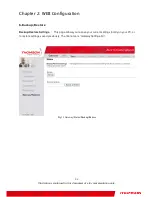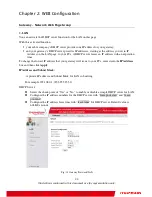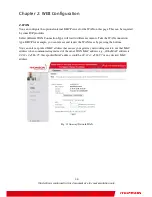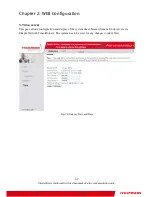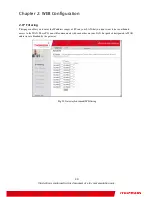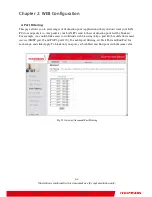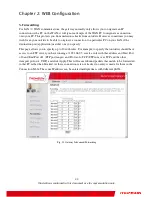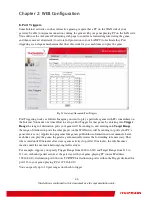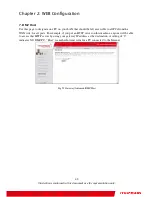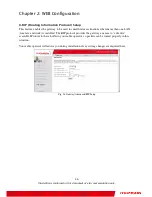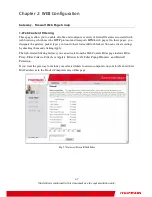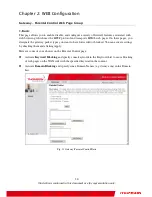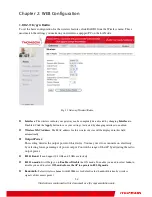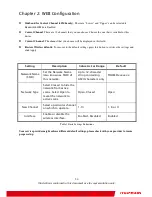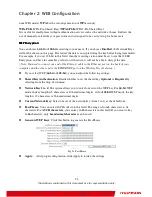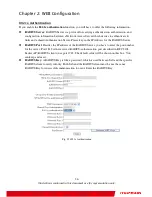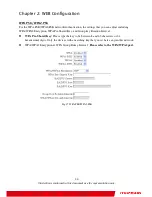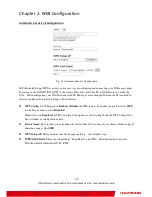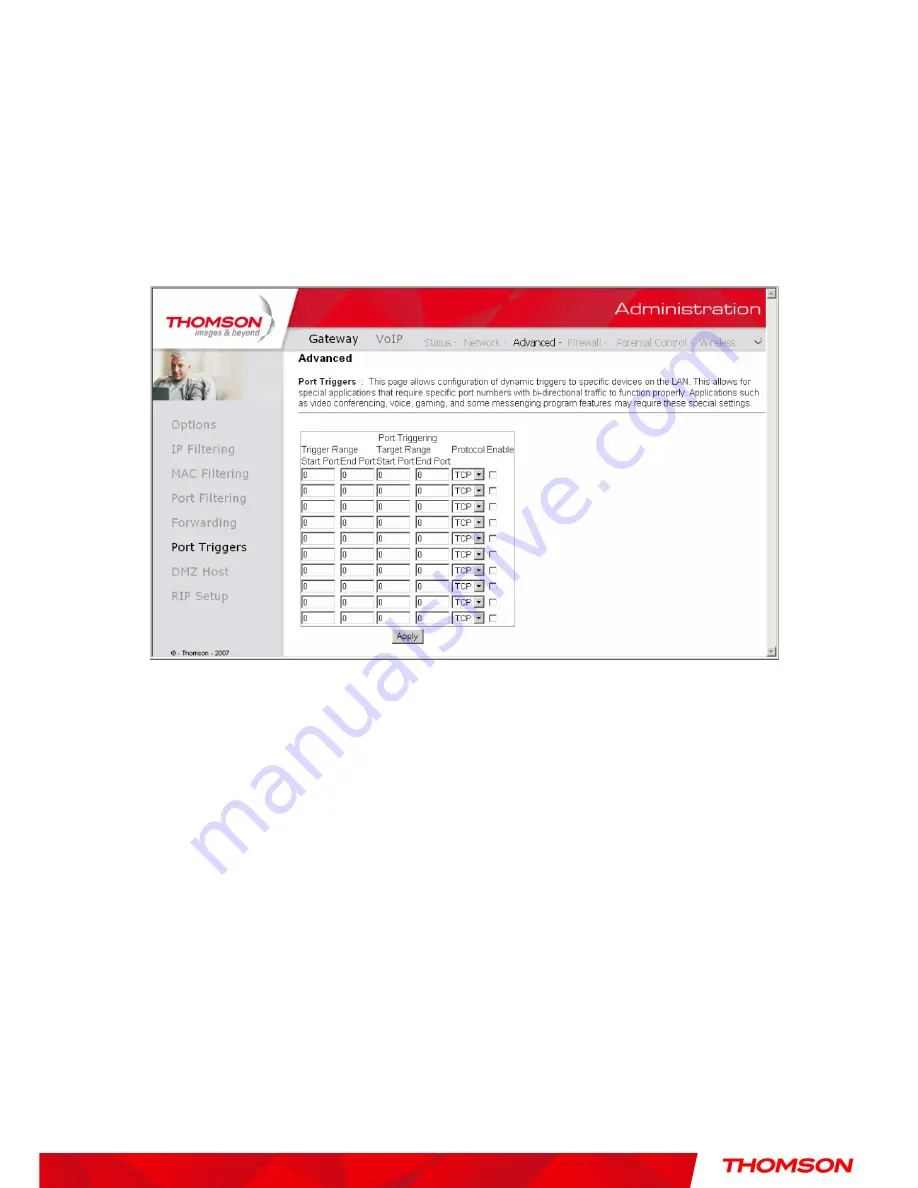
Chapter 2: WEB Configuration
Illustrations contained in this document are for representation only.
44
6. Port Triggers
Some Internet activities, such as interactive gaming, require that a PC on the WAN side of your
gateway be able to originate connections during the game with your game playing PC on the LAN side.
You could use the Advanced-Forwarding web page to construct a forwarding rule during the game,
and then remove it afterwards (to restore full protection to your LAN PC) to facilitate this. Port
triggering is an elegant mechanism that does this work for you, each time you play the game.
Fig. 24 Gateway\Advanced\Port Triggers
Port Triggering works as follows. Imagine you want to play a particular game with PCs somewhere on
the Internet. You make one time effort to set up a Port Trigger for that game, by entering into
Trigger
Range
the range of destination ports your game will be sending to, and entering into
Target Range
the range of destination ports the other player (on the WAN side) will be sending to (ports your PC’s
game receives on). Application programs like games publish this information in user manuals. Later,
each time you play the game, the gateway automatically creates the forwarding rule necessary. This
rule is valid until 10 minutes after it sees game activity stop. After 10 minutes, the rule becomes
inactive until the next matched outgoing traffic arrives.
For example, suppose you specify Trigger Range from 6660 to 6670 and Target Range from 113 to
113. An outbound packet arrives at the gateway with your game-playing PC source IP address
192.168.0.10, destination port 666 over TCP/IP. This destination port is within the Trigger destined for
port 113 to your game-playing PC at 192.168.0.10.
You can specify up to 10 port ranges on which to trigger.



